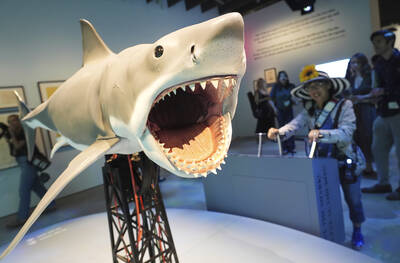There’s porn and then there’s “healthy” porn, according to an interdisciplinary research panel, who have compiled a list of criteria to help young people spot the difference.
Alan McKee, who led the project, argues that young adults should be taught “porn literacy” to help them “read porn well” and look for healthy and ethical depictions of sex.
Picture diverse bodies, with diverse ways of doing things from navigating erectile dysfunction to negotiating consent for kinks and fantasies, instead of “sexist, racist, ableist stereotypes.”

Photo: AP
“Pornography is not homogenous,” says McKee, a pornography researcher and head of the University of Sydney’s school of art, communication and English.
The panel’s determinations have been published in the International Journal of Sexual Health, in a peer-reviewed article that sets out six criteria for healthy pornography, along with a lesson plan for adults aged 18 to 25.
The criteria are: a variety of sexual practices; a variety of body types, genders and races; a negotiation of consent on screen; ethical production; a focus on pleasure for all participants; and depictions of safe sex.
McKee says that, in the same way that the “war on drugs” has famously failed, prohibition-style approaches to porn fail too.
The current conversation in Australia is about “protecting” young people from the harms of pornography, as though “all pornography is the same and equally harmful,” he says.
“Looking at young adults, 18 to 25, if you do have a child in that age group it’s not very helpful to say all pornography is bad.
This is because it assumes “all pornography … works in the same way,” which isn’t true, McKee says.
Last year, he published the book, What Do We Know About The Effects of Pornography after Fifty Years of Academic Research?
The answer was “not very much,” because academic research has consistently taken a monolithic view; lumping violent porn — from the early cowboy days of the Internet, heteronormative porn and porn produced by queer, feminist directors or solo sex workers on platforms like OnlyFans — all into one category.
To develop the criteria, McKee assembled a Delphi panel — an interdisciplinary group of experts on a topic where there is not a consensus — who worked on the project together.
While pornography can be made for hollow gratification, with no regard for wellbeing, McKee writes that healthy pornography can actually contribute to disease free, safe sex, that helps enable healthy sexual development.
But the entire project is “deeply controversial,” McKee says. There are plenty of people who doubt that any sexually explicit material can be benign, let alone benevolent.
Even “normal” lets the devil in, Pope Francis told his millions of followers last year — while conceding that priests and nuns are known to partake.
Anti-porn campaigners such as Collective Shout argue that you can’t “whitewash” the porn industry.
(The journal article notes one limitation was that no anti-porn activists were included in the Delphi panel, which could have affected the outcome.)
“I think it’s close to impossible,” Melinda Tankard Reist of Collective Shout, says, adding that most porn consumers want pornography that features violence and the degradation of women.
“We don’t believe you could make this industry better and the vast majority of consumers aren’t ever going to be looking for ethical porn,” she says. “And who’s deciding what’s ethical anyway?”
On the other hand, associate professor Debbie Ollis, a health and sexuality researcher at Deakin University who was not involved in the panel, says it is possible to develop “ethical” pornography. But she can’t see the industry as a whole going that way.
Young people should be discussing issues of power, gendered assumptions and gender-based violence, she says, because the research clearly shows “young people and even children are accessing porn intentionally and unintentionally.”
“We do have to acknowledge young people’s use of porn and provide education that can help and guide them, with a framework that helps them make sense of what they see in porn and how it relates to an ethics of care — care for self and care for others.”
McKee notes that there is conflict and nuance, even when experts broadly agree.
The “biggest source of disciplinary disagreement” in the project, he writes in the article, was also the central tenet — what is “healthy?”
“The word often has a moral connotation, used to police the behaviour of marginal or powerless groups in society — for example, for many decades homosexuality was described as ‘unhealthy.’”
The panel also discussed whether there should be “representations of emotional intimacy during sex,” which some argued would push casual sex to the “unhealthy” side of the ledger.
McKee says the idea that casual sex — or kink — is a bad thing has muddied much of the previous research on the perceived harms of pornography.
“It assumes that the ideal end point is a loving, married, monogamous relationship and sex is only to express that love or have a baby,” he says.
The Delphi panel also discussed a criterion that pornography should be purely educational and not arousing. They ultimately decided against it, determining pornography could be both educational and arousing.

The depressing numbers continue to pile up, like casualty lists after a lost battle. This week, after the government announced the 19th straight month of population decline, the Ministry of the Interior said that Taiwan is expected to lose 6.67 million workers in two waves of retirement over the next 15 years. According to the Ministry of Labor (MOL), Taiwan has a workforce of 11.6 million (as of July). The over-15 population was 20.244 million last year. EARLY RETIREMENT Early retirement is going to make these waves a tsunami. According to the Directorate General of Budget Accounting and Statistics (DGBAS), the

Many will be surprised to discover that the electoral voting numbers in recent elections do not entirely line up with what the actual voting results show. Swing voters decide elections, but in recent elections, the results offer a different and surprisingly consistent message. And there is one overarching theme: a very democratic preference for balance. SOME CAVEATS Putting a number on the number of swing voters is surprisingly slippery. Because swing voters favor different parties depending on the type of election, it is hard to separate die-hard voters leaning towards one party or the other. Complicating matters is that some voters are

Five years ago, on the verge of the first COVID lockdown, I wrote an article asking what seemed to be an extremely niche question: why do some people invert their controls when playing 3D games? A majority of players push down on the controller to make their onscreen character look down, and up to make them look up. But there is a sizable minority who do the opposite, controlling their avatars like a pilot controls a plane, pulling back to go up. For most modern games, this requires going into the settings and reconfiguring the default controls. Why do they

Take one very large shark, a boat (we’re gonna need a bigger one of those) and a movie that ran way over budget and you’ve got all the ingredients of a career-making film for one of Hollywood’s most successful directors. Now fans of Jaws — Steven Spielberg’s terrifying thriller about a man-eating shark — can re-live the movie as it celebrates its 50th anniversary in an exhibition at the Academy Museum in Los Angeles. “The film certainly cost me a pound of flesh, but gave me a ton of career,” Spielberg told reporters as he toured exhibits of props and memorabilia